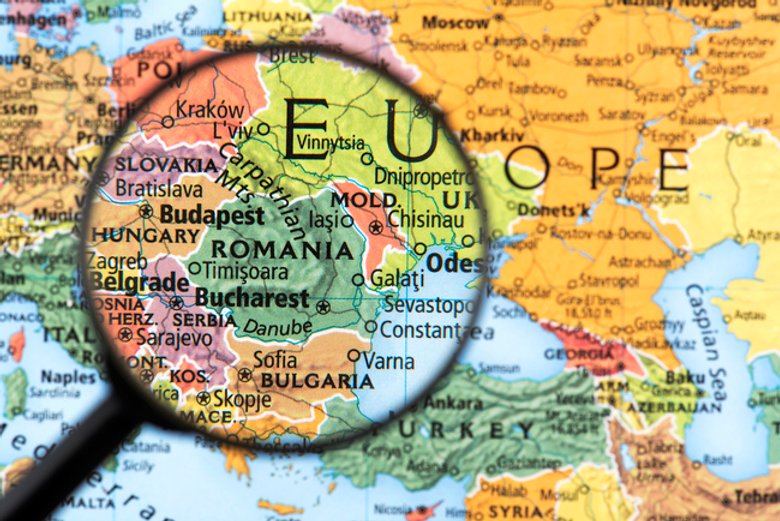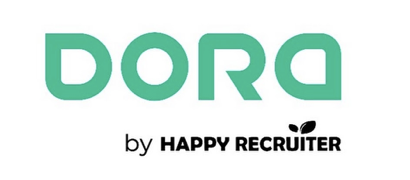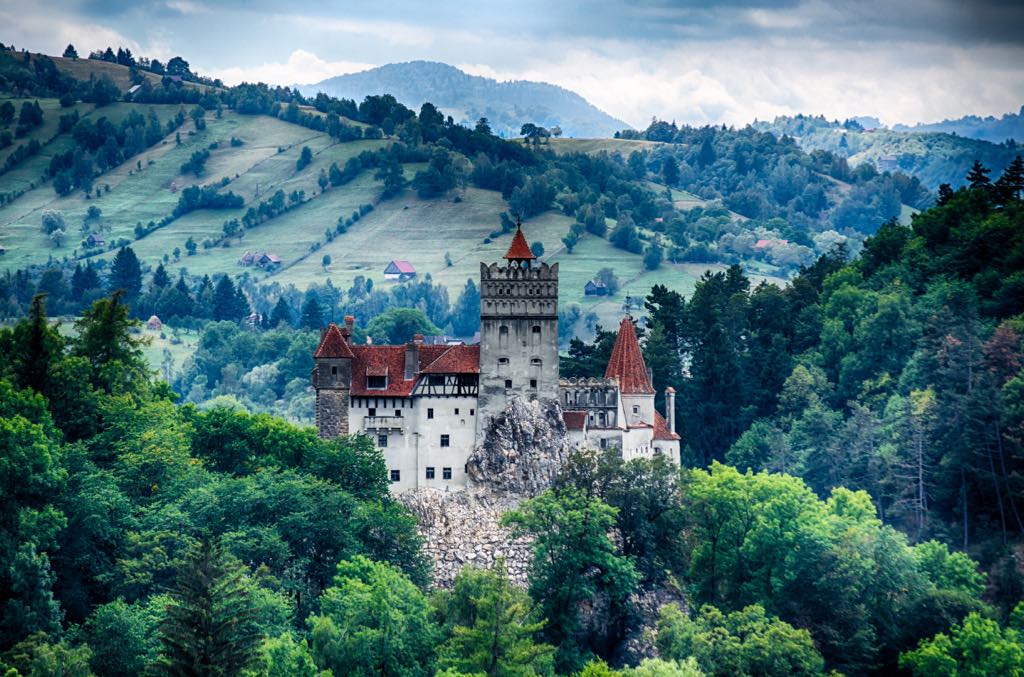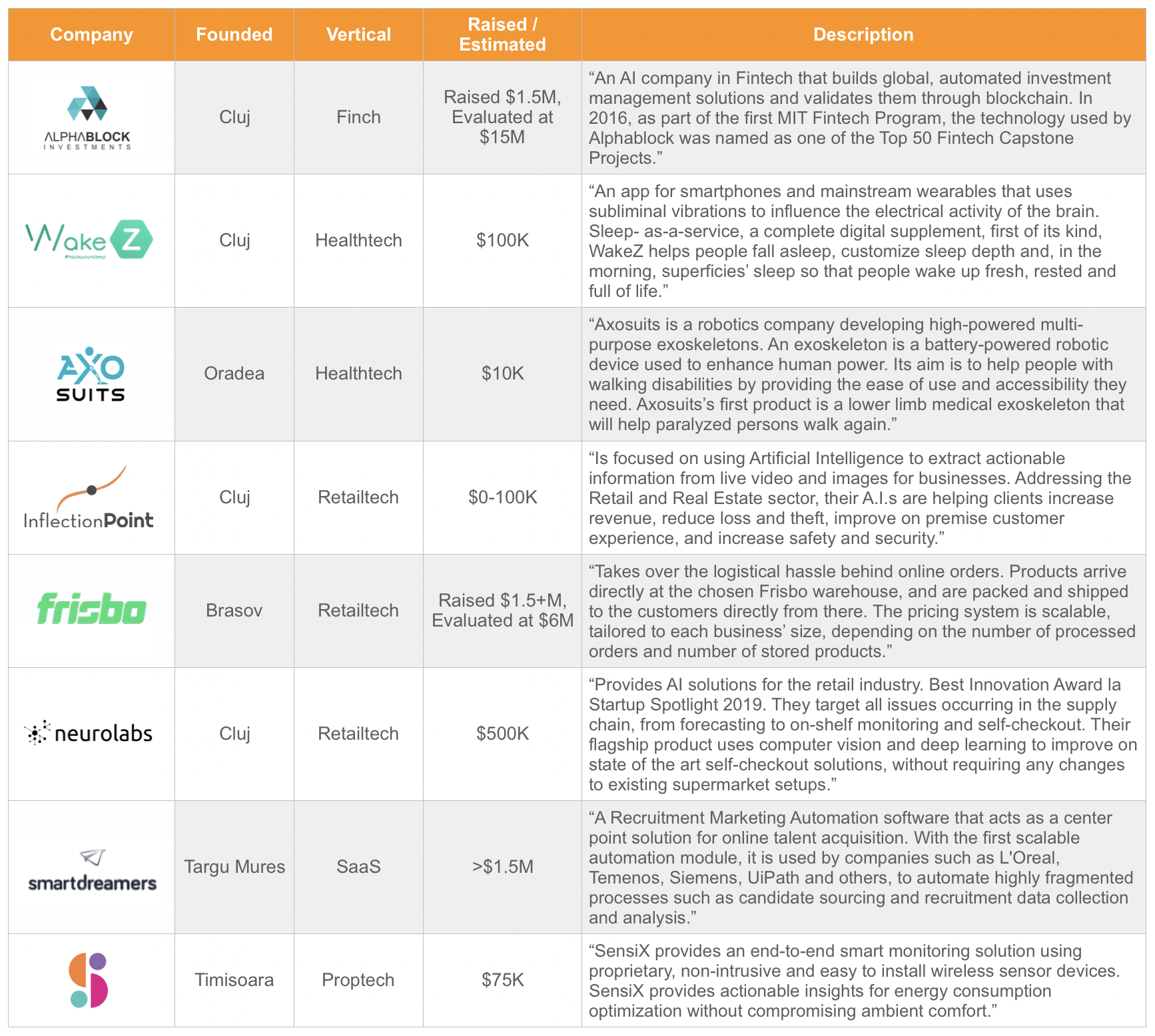If you type ‘Transylvania’ in your search bar, the web browser instantly reveals images of medieval castles and gothic architecture, thick forests, lakes, gorges and passages, alpine landscapes and untouched nature that steal your breath. The region surrounded by the Carpathian Mountains, one of the wildest mountain ranges in Europe, is often associated with wolves howling in the night or the name of Count Dracula — symbols that picture the legends of this land. If we look in more closely, we discover that beyond the natural spectacle and rich symbolism of Transylvania, the region is a strong economic center, a cultural pole that hosts international events, and also an important innovation hub, especially in information technology.
Romania has a few decades of tradition in IT. The story begins after World War II, when the country was part of the former Soviet Union. After 1950, Romania was one of the computer producing countries within COMECON (Council for Mutual Economic Assistance), the economic organization initiated by the former communist bloc as a counterbalance to the Marshall Plan implemented by OEEC in Western Europe.
A Booming Tech Destination
Today, Romania is one of the most powerful IT hubs in Central and Eastern Europe and the 6th country in the world in terms of number of IT certifications per capita, more than Germany or the UK have. The number of experts, estimated at 140,000 by 2020, has a growth rate of 17.5% every year. In 2019, the Romanian IT market was valued at over €5B, having a 6% contribution to the country’s GDP. The value of the IT sector has doubled compared to 2013 and shows an annual growth of 14.3%. According to a report by the labor market analysis company Brainspotting, the largest investors in Romania are the German companies, with over 320 multinationals, followed by the Italian (260), French (209), American (176) and Dutch (137).

Romania ranks 6th in the world in terms of number of IT certifications.
Not only the investments but also the talented human resource in the region makes the performance in this sector possible. The Romanian teams participating at the European Olympics in mathematics, computer science, astronomy, or robotics are constantly winning these competitions. Last year, Autovortex and Quantum Robotics teams won the gold medal at the International Robotics Championship in South Korea, and the Romanian juniors participating at the European Olympiad in Informatics came home with three gold medals.
As for the national companies in the tech area, their number increased considerably in recent years. Romanian startups deliver products all over the IT sector, starting from Fintech to Healthtech and SaaS. According to the database dedicated to new companies in the tech area, over 400 startups are registered in Romania, initiated by approximately 800 founding members.
Cluj-Napoca: A Young & Promising Tech Hub
Except for the country’s capital, most of the young IT companies are based in Cluj Napoca, the unofficial capital of Transylvania and the second economic and university center in the country, after Bucharest. Over 100,000 students from 10 public and private universities graduate annually in Cluj Napoca. Of these, over 3,000 are foreign students. The generous human resource and the advancement in the IT industry make Cluj Napoca the second IT hub in Romania, after the capital, with over 10,000 active developers in 2019. The number of IT companies doubled in the last 6 years, compared to only 50% increase at national level. Startups “invented in Cluj” have grown exponentially in the last 6 years, registering a phenomenal increase of 281%. In fact, some of the oldest and largest IT companies in Romania were founded in the city crossed by the Somes River: NTT Data (the former EBS, taken over in 2013 by the Nippon Telegraph and Telephone Group), Softvision (recently acquired by the American company Cognizant), Net Brinel (taken over in early 2019 by the French company SNEF), Arobs Transilvania Software or Fortech. The center of Transylvania is, today, one of the most promising markets in niche technologies such as Python, Ruby or Hybris. Compared to Bucharest, the companies from Cluj Napoca place greater emphasis on Machine Learning, Artificial Intelligence, Security, Blockchain and Big Data.
The most valued Romanian companies
Romania had in 2018 the first unicorn in the world tech landscape: UiPath (unicorn refers to privately held startup companies with over $1B valuation). The company, established in Bucharest, is now headquartered in New York and was ranked first in the Deloitte Technology Fast 500, in November 2019. Last year, UiPath raised $568M in a Series D funding round, representing 51% of the total funds invested in Central and Eastern Europe (CEE) startups. The round was led by the hedge fund Coatue Management, with the participation of CapitalG of Alphabet, Sequoia, Accel and other major investors. At this time, the value of the RPA company is estimated at $7B, and UiPath becomes the highest-rated Romanian company.
Next to UiPath, the most valued Romanian companies are the antivirus specialist BitDefender, valued at over $600M, then LiveRail startup. The last one, also born in Cluj Napoca, was purchased in 2014 by Facebook for $500M, but was later put on standby. More recently, in 2017, Vector Watch, the first Romanian company to produce underwater smart watches, was acquired by the American wearables giant Fitbit, for a value that has not been made public.
Along with several angel investors, Venture Capital is the main form of financing companies in the CEE region. Except for the round won by UiPath, the startups from Transylvania received the largest external financing last year:

1. ELROND (Fintech, Sibiu) – $1.71M
“Founded in 2017 in Sibiu, Elrond brings broadband performance to blockchain. Specifically, Elrond brings a 1000x improvement in throughput, execution speed, and transaction cost. It also improves user experience and lowers barriers to entry for network participation through low computational requirements and staking cost.” [1]

2. TYPINGDNA (SaaS, Oradea) – $1.35M
“This is a behavioral biometrics company protecting the identity of online users based on how they type on their keyboards. Founded in 2016, Typingdna was selected as one of the top 50 innovative startups in Europe (EUTOP50) and is a Techstars NYC alumni. TypingDNA is used by millions of users worldwide and has offices in Oradea, Romania and New York.” [2]

Cluj-Napoca counts almost half a million inhabitants, excluding city transit and students. According to Eurostat, the city placed right in the heart of Transylvania is in the top three cities with the fastest growth in the EU, mainly due to the expansion of the IT field. The dynamics of the city demanded innovative administrative measures, and technology became a necessity in the daily urban life. Cluj-Napoca is one of the pioneer metropolis to adopt the SmartCity concept, implemented in most major cities in the world. In 2018, the first electric buses in Romania were purchased here. Innovations in the city include: solar charging points for mobile devices and charging stations for electric cars, a mobile application that monitors available parking spaces, and a Wi-Fi network that is free of charge in the city center. Cluj Napoca’s city hall implemented the first virtual officer who digitally serves over 70 administrative procedures. In fact, most of the cities in Transylvania are included in the SmartCity project. Oradea and Alba Iulia are in the most advanced stages.
The main city in Transylvania is also known as being the “Cluster Capital of Romania”. Transylvania IT Cluster, established in 2013, is the most powerful IT conglomerate in South Eastern Europe. Currently, the consortium has over 118 members (companies, universities, public authorities, and research institutes), a turnover of over €350M and more than 6,000 employees. Transylvania IT is the only IT cluster in South Eastern Europe awarded with the Gold Certificate by the European Secretariat for Cluster Analysis.
Raising the Bar with the Cluj Innovation City
The city administration rose the stake to the next level: “Cluj Innovation City”. This could be the most complex research and innovation project in Romania, with an agenda for the next 10 years. The project represents an investment of €500M and two million square meters, which would create 20,000 jobs and host 100,000 inhabitants. Its purpose is to bring together local authorities, universities and the business environment to create a competitive environment in the tech sector. The project brings to mind a phenomenon that started several decades ago around Stanford University and evolved to what we call today Silicon Valley and the Venture Capital industry.
Of the approximately 100,000 graduates from Cluj, many decide to settle here after finishing college. Of these, a large portion do so because of the IT opportunities in the area. According to the National Institute of Statistics, the average net salary in Romania in 2019 was just over €650. Comparatively, the average salary in the IT field was €1600, 2.5 times higher. However, IT&C specialists represent only 2.2% of the total number of employees in Romania, and the market is avid for fresh workforce.
The IT industry in Romania is slowly shifting its focus from delivering outsourcing services to developing its own competitive products, including in the area of cognitive applications, or cybersecurity. Technology changes the world as we know it and becomes an inseparable part of our lives. The speed at which things change doesn’t seem to slow down either. We and our personal devices are all connected to the internet and artificial intelligence is quietly spreading.
With the technological advancement, the challenges of the labor market also increase, especially for those with a medium-skill level. According to a report from OECD, 14% of existing jobs will disappear in 15-20 years as a result of automation, and another 32% will be radically transformed. Under these conditions, it is imperative for innovation to become the main engine of inclusion of those affected.
As for Transylvania, young companies are moving things towards Industry 4.0 and preparing the ground for a new industrial revolution. With a sense of moderation and responsibility for this new type of rapid economic growth, things will be heading in the right direction and will also be sustainable in the long term. And, who knows… maybe one day, technology will help us solve even the mystery of the werewolves. People say they hear them howl, whenever the full moon rises upon these lands…












